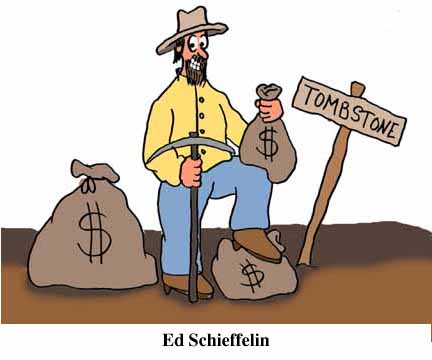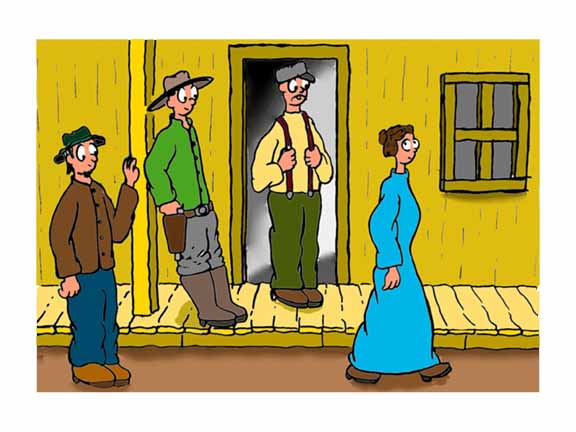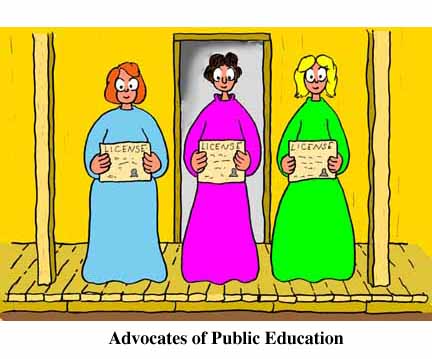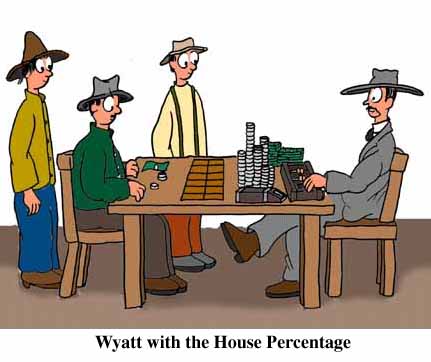|
|
|
|
Return to OK Corral Contents |
Chapter 3
The Merry Tales of Tombstone

You've met the Clantons, the McLaurys, and the Earps.
Now meet Ed Schieffelin.
Huh?
Ed who?
Yep, that's what most people say. But American history, not to mention people like Hugh O'Brien, Kurt Russell, and Kevin Costner, owe a lot to Ed Schieffelin.
That's because without Ed Schieffelin no one would ever have heard of Wyatt Earp.
You see, despite the fact that Wyatt is known as one of the most famous lawman in the West and one of the nerviest, steely men with a gun, his reputation really rests on one, and only one, gunfight. That is, of course, the Gunfight at the OK Corral.
Without that single gun battle, his days spent in Ellsworth, Wichita, and Dodge would have been mentioned only in passing - or more likely totally ignored - by historians. No newspapers would have interviewed him in his later years, and he would never have been asked to referee the Fitzsimmons/Sharkey fight in 1895.
And he would almost certainly never have gotten involved in most of his later gunfights which - no matter how the Earp Champions sanitize them - were mostly him blasting away at unarmed or outnumbered men in revenge killings. Without the OK Corral, Hollywood would have had to look elsewhere for a hero.
So to have the Legend of Wyatt Earp you need to have the OK Corral.
And to have the OK Corral you need to have Tombstone, Arizona.
And to have Tombstone, Arizona, you need ...
You guessed it. You need to have Ed Schieffelin.
In 1877, Ed Schieffelin was a young man trying to strike it rich in the West. So he was no different than thousands of other men in the last part of the nineteenth century who wanted to make it rich without working for a living and who after he made his bundle would just take up and get out. Today Ed would probably be an aspiring CEO. But back then he had to be a prospector.
Unlike most of his contemporaries, though (and LIKE most CEO's), Ed did strike it rich. But not through any help of his friends. When Ed said he would try his luck in southern Arizona, they tried to change his mind.
Their main concern was that the Apache Indians had been causing "difficulties." The Apaches said the land was theirs and occasionally would have altercations with the prospectors like Ed who would drift down from time to time.
But as usual the tales were exaggerated. You'd be more likely to get killed by falling off your horse or by fording a river. But Ed's friends still told him all he'd find down there was his tombstone.
Instead he found a vein of silver that assayed at $2000 per ton. At a time when $10 a ton was a good find, you couldn't beat that. So he staked his claim and got rich.
But to show he was a good sport (and also to rub it in a bit), he named the town that sprung up as "Tombstone." It's still there today, about two hours south of Tucson. Now completely a tourist town, it remains a popular side trip for money-laden business executives on convention trips who will drive from as far away as Phoneix. "We love 'em," a local resident recently said.
But in the late 1870's, it was typical of a western mining boomtown. Virtually everyone there were young, footloose young men, all bent on making a fast, easy buck. And to cater to their whims were various and sundry merchants, storekeepers, and saloonmen, also intent on making a fast, easy buck. And there were ranchers (like the Clanton's and McLaurys), who hoped that raising (and sometimes rustling) livestock would make them a fast, easy buck. And to top the citizenry off, you had miscellaneous newspapermen, politicians, judges and businessmen, all also intent on making a fast, easy buck.
And don't forget the Earps. Even they (or perhaps we should say "especially they") were intent on making a fast, easy buck.
It was probably the merchants who made the fastests easiests bucks, though. Believing in the law of supply and demand long before John Maynard Keynes did, they fit their business to their clientele. Saloons, gambling, and dance halls were plentiful and with them up sprang the ubiquitous "sporting houses." And when you got sporting houses, whaddaya get with 'em? You bet - you get sporting women. In abundance.
There were also the more independent and self-employed of these feminine enterpreneurs. Anticipating the modern executive, they had (this is no joke) business cards printed up and boasted their charms with prominently placed advertisements. Some showed considerable ingenuity, and one ad boasted that "300 pounds of passion" were available for a most moderate fee. You don't get creativity like that from the J. Walter Thompson Agency .

But to balance things out there were also a few churches and schools. Bowing to practical reality and to minimize the forerunner of the modern tax revolt, the town fathers decided not to support these public institutions from a direct levy.
So where would you turn to if you wanted steady reliable revenue to support churches and schools in a town full of young, hormone-ridden young men?
Yep, you'd slap a tax on the sporting ladies and their establishments. And to make everything official and proper (and simple), licenses were issued, and the resulting fees were earmarked for the religious and educational institutions.

Brilliant.
The trouble with a boom town, though, if you want to make money in mining, you have to be the first one there. Or at least pretty close on the heels of the first one. Ed got rich, sure, but a lot of other prospectors lost their shirts.
So if you weren't really cut out to be a miner, rancher, farmer, newspaperman, or, of course, a"sporting lady", there was one field you might try: land and mining speculation. If you were smart and didn't really intend on settling there permanently, you could make good money at it. And being no fools, that's what the Earps went in for.
Becoming a mining speculator was relatively easy. You went out and staked a claim. Then you assayed your ore at a good price. If it really didn't yield as much as much as you wanted, why a little persuasion with the local assay office might help increase the amount of silver found per ton. Or if the assayer was an honest man (and the problem was, most of them were) there was no real reason why the ore you gave him REALLY had to come from your claim. Then you could then sell your mine to some sucker - or rather, some enterprising young man. Except for the filing fee, what you got was all profit. Water rights could be similarly obtained and sold.
The Earps picked up a nice bit of change there. Virgil also retained his deputy federal marshal's commision and was hired as the town marshal. He made Wyatt his assistant. And if he needed more help, he'd call in Morgan. Wyatt sometimes would serve as a guard for Wells Fargo and Morgan would ride shotgun on the stage from Benson to Bisbee. James stuck to his saloon.
Wyatt was also a "special policeman" assigned to the Oriental Saloon. The Oriental was run by a man named Bucksin Frank Leslie. He lived a colorful life to say the least. Once he shot a man in the back, claimed self defense, and was acquitted. Naturally, he and Wyatt got along well.
Now a special policeman assigned to a saloon was a bit more elevated than a bouncer as it did have some official status in the town government. But just sitting around keeping the peace could get a bit tedious. You see, despite what the movies and TV portray, gunfights were rare. Marshal Dillion might have plugged ten or twelve guys every week, but the reality was a bit less exciting. Even during their most violent days, the towns of Abilene, Ellsworth, Dodge City, Wichita, and Hays might average one - count 'em - one fatal shooting every year or two. Sure, in a saloon an occasional rowdy might have to be told to quiet down or get out, but most of the patrons preferred to gamble and drink in peace.
So rather than read Shakespeare, discuss philosophy, or double as a singing waiter, Special Policeman Earp took on the added duties as a faro dealer.

No one plays faro much anymore. That's because it's boring. You put your money on a layout which shows all the card ranks. The dealer then turns up two cards. The first is a losing card and the other is a winner. If your bet was on a loser, you lose; if it's on a winner you win. Or you can put a copper marker on your bet; then if you lose, you win.
Got that?
And the modern casino owners don't care for it much. Not because it's boring, but because it has a low house percentage. Although one bet has an advantage of 16 % for the house, others give only about 2 % and some are dead even. So given the rather complex rules of betting, a player can get by with a disadvantage of only about 1%. Of course, most miners (like some people even now) didn't even know what a house percentage was, or if they did, they figured that a possible 1% loss for an evenings entertainment was a good risk. After all, if you were lucky you might clean up.
But what Wyatt didn't tell his customers (and most modern casino owners won't tell their customers either) is that a house percentage is not the average expected loss. It's the average RATE of loss. So you keep betting long enough and you'll still lose all your money. It doesn't matter if it's a pari-mutual horse race with 10 heats and a cut of 20% for the state or a faro game with a 1% house advantage spread out over 500 hands. The money still ends up on one side of the table. And it ain't your side, baby.
So here's the set-up. Around 1880 you have the town of Tombstone, Arizona Territory, chock full of saloon keepers, sporting women, crooked (and honest) politicians, newspaper editors, aldermen, judges, and businessmen, all in town to make a fast easy buck. The Earps are there, too, and by gambling, law enforcement, and mine speculation are making a fast easy buck as well. And you have the Clantons and McLaurys about fifteen miles away, making a fast easy buck by raising and selling their livestock with a few other business interests thrown in for good measure.
In a town about three blocks long, you might expect it wouldn't be long before the Earps and Clantons would bump into each other.
And you'd be right.